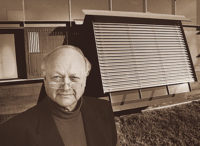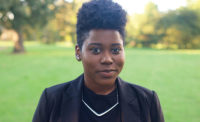Landscape architect Glenn LaRue Smith has practiced for nearly 40 years, but he admits the profession wasn’t even on his radar when he was young. After a stint as an engineering student, he sought a more artistic path and turned to landscape architecture, eventually earning his master of landscape architecture from the University of Michigan-Ann Arbor. Smith served a term as president of the American Society of Landscape Architects’ (ASLA) New York chapter, and received a Loeb Fellowship in advanced environmental studies from the Harvard Graduate School of Design. In 2013, he cofounded PUSH Studio, where he is a principal, in Washington, D.C. Smith spoke with record about how race intersects with design, and about his most recent endeavor, the Black Landscape Architects Network (BlackLAN).
You founded BlackLAN in 2010. Where did that idea come from, and how has it grown?
I was the first African American graduate of Mississippi State’s landscape architecture program. While I didn’t have a difficult time there, there is a certain difficulty that comes from realizing no one else looks like you. I was in graduate school before I met my first Black landscape architect, Elon Mickels, in Detroit—and it was powerful. I realized there should be a way for us to connect. I created an invitation-only LinkedIn group for individuals of African ancestry to post relevant information about the profession or the diaspora in general. We now have 148 members across the U.S., Canada, and several African countries. Growth and visibility are important for gathering more accurate statistical information, because right now it’s just not there. The ASLA estimates that less than 1 percent in the profession are African American.
What’s next for the group?
I have two major goals: to create a database of as many Black landscape architecture students and professionals as possible, and to begin to document the history of Black landscape architects. It’s a big project, but necessary. A lot of people complain about the history of the profession being very Eurocentric, but that’s because the research hasn’t been done. I think it’s our responsibility in the BlackLAN network to bring that to the surface, so that schools and firms can’t say “we don’t have any information” or “we can’t find anyone to work in our office.”
Much of your work has focused on environmental justice. What does that term mean to you?
I look at it from the perspective of “How do you educate underserved communities about design and teach them how to ask the right questions?” People who have been well educated, with exposure to money and certain projects, ask for things that people in underserved communities might not consider.
How can designers advocate for those communities?
Design has to become contextually three-dimensional. This means that designers have to look deeper at community nonprofits, banking, zoning, politics, race, and embedded bias within project areas. Architects, landscape architects, engineers, and planners must forge new relationships to bridge current professional roadblocks that diminish a sense of humane communities.
What does the future of environmental justice look like?
The transformative focus has to be “human justice,” which encompasses the full range of human living and engagement. This expands upon how designers interface with scientists, politicians, policy makers, and builders to bring balance to racially and environmentally separated communities.








Post a comment to this article
Report Abusive Comment